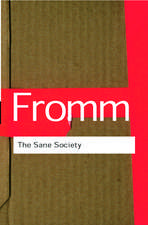The Contextual Challenges of Occupational Sex Segregation: Deciphering Cross-National Differences in Europe
Autor Stephanie Steinmetzen Limba Engleză Paperback – 10 dec 2011
Preț: 385.84 lei
Nou
Puncte Express: 579
Preț estimativ în valută:
73.83€ • 77.28$ • 61.45£
73.83€ • 77.28$ • 61.45£
Carte tipărită la comandă
Livrare economică 31 martie-14 aprilie
Preluare comenzi: 021 569.72.76
Specificații
ISBN-13: 9783531179643
ISBN-10: 3531179640
Pagini: 288
Ilustrații: 288 p. 34 illus.
Dimensiuni: 148 x 210 x 20 mm
Greutate: 0.36 kg
Ediția:2012
Editura: VS Verlag für Sozialwissenschaften
Colecția VS Verlag für Sozialwissenschaften
Locul publicării:Wiesbaden, Germany
ISBN-10: 3531179640
Pagini: 288
Ilustrații: 288 p. 34 illus.
Dimensiuni: 148 x 210 x 20 mm
Greutate: 0.36 kg
Ediția:2012
Editura: VS Verlag für Sozialwissenschaften
Colecția VS Verlag für Sozialwissenschaften
Locul publicării:Wiesbaden, Germany
Public țintă
ResearchCuprins
The State of the Art in Occupational Sex Segregation Research. - Explaining Occupational Sex Segregation. - The Problem of the Measurement of Sex Segregation revisited. - Female Labour Force Participation and Patterns of Occupational Sex Segregation in Europe. - Variations in Occupational Sex Segregation across EU Member States: Creating a Typology of "Sex Segregation Regimes". - Institutional Constraints on Cross-national Differences in Occupational Sex Segregation.
Notă biografică
Dr. Stephanie Steinmetz completed her doctoral thesis under the supervision of Prof. Dr. Dr. h.c. Walter Müller at the Mannheim Centre for European Social Research (MZES), University of Mannheim. She is an assistant professor of sociology at the University of Amsterdam.
Textul de pe ultima copertă
This study untangles the complex interplay of individual and contextual factors shaping cross-national differences in horizontal and vertical occupational sex segregation. It relates the individual factors affecting occupational decisions to the broader social and economic context within a given society. Following this approach, Stephanie Steinmetz provides a comprehensive overview of the development and causes of cross-national differences in occupational sex segregation. She offers insights into the positioning of 21 EU Members States, particularly of former CCE countries. Based on advanced multi-level models, the study shows that institutional factors, such as the organization of educational systems, post-industrial developments, social policies, and the national ‘gender culture’, play a crucial role in shaping sex segregation processes apart from individual factors. The author clarifies that a distinct set of institutional factors is relevant to each of the two dimensions of occupational sex segregation and that these factors operate in different directions: some reduce horizontal segregation while at the same time aggravating the vertical aspect. Finally, the study assesses the empirical findings from a political perspective by addressing the future contextual challenges of EU Member States seeking to attain higher gender equality on the labour market.
Caracteristici
Deciphering Cross-National Differences in Europe
















